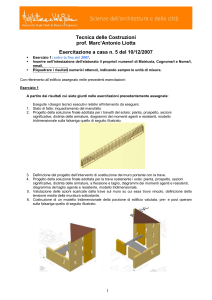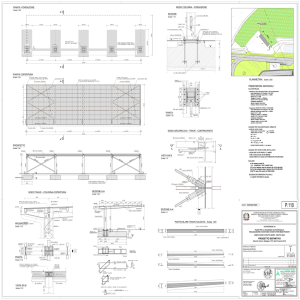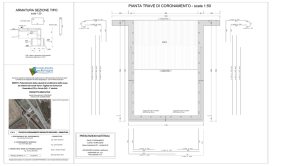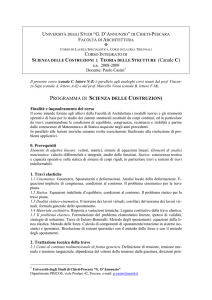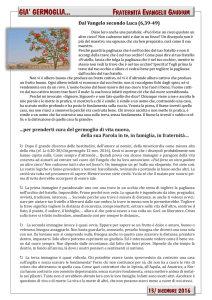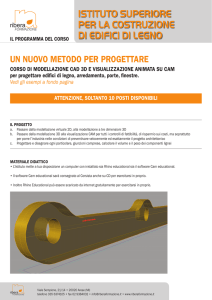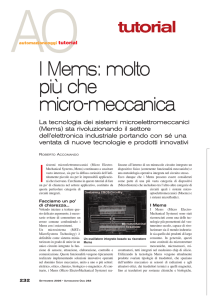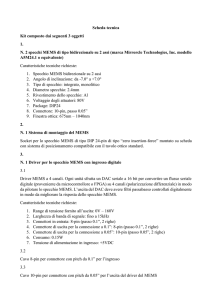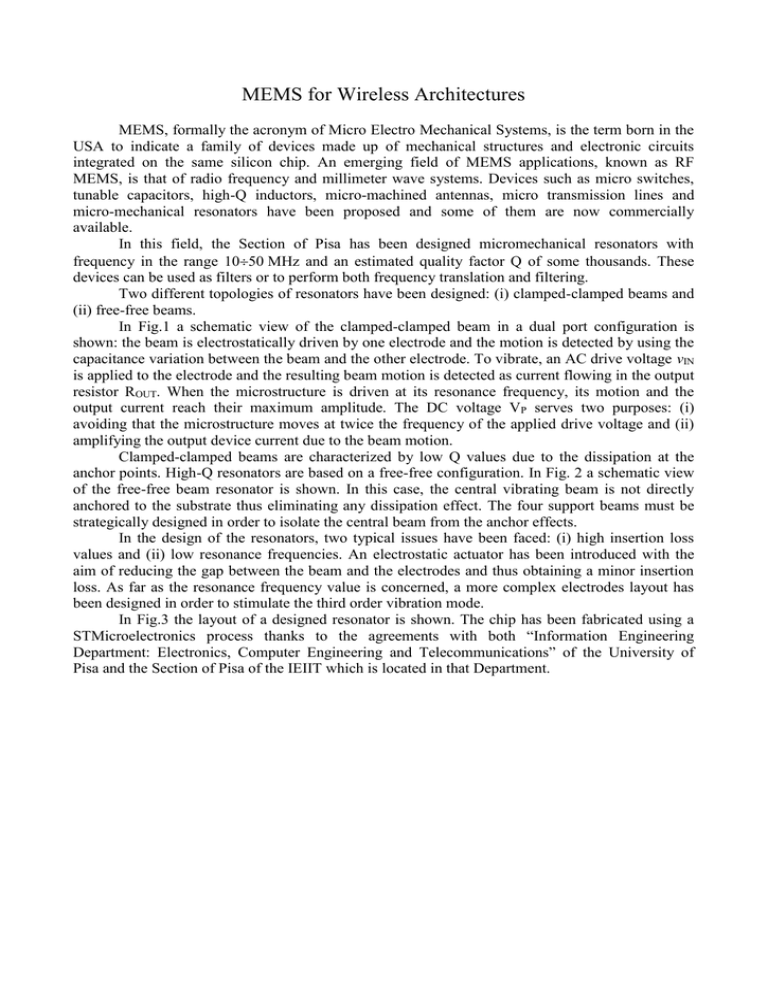
MEMS for Wireless Architectures
MEMS, formally the acronym of Micro Electro Mechanical Systems, is the term born in the
USA to indicate a family of devices made up of mechanical structures and electronic circuits
integrated on the same silicon chip. An emerging field of MEMS applications, known as RF
MEMS, is that of radio frequency and millimeter wave systems. Devices such as micro switches,
tunable capacitors, high-Q inductors, micro-machined antennas, micro transmission lines and
micro-mechanical resonators have been proposed and some of them are now commercially
available.
In this field, the Section of Pisa has been designed micromechanical resonators with
frequency in the range 1050 MHz and an estimated quality factor Q of some thousands. These
devices can be used as filters or to perform both frequency translation and filtering.
Two different topologies of resonators have been designed: (i) clamped-clamped beams and
(ii) free-free beams.
In Fig.1 a schematic view of the clamped-clamped beam in a dual port configuration is
shown: the beam is electrostatically driven by one electrode and the motion is detected by using the
capacitance variation between the beam and the other electrode. To vibrate, an AC drive voltage vIN
is applied to the electrode and the resulting beam motion is detected as current flowing in the output
resistor ROUT. When the microstructure is driven at its resonance frequency, its motion and the
output current reach their maximum amplitude. The DC voltage VP serves two purposes: (i)
avoiding that the microstructure moves at twice the frequency of the applied drive voltage and (ii)
amplifying the output device current due to the beam motion.
Clamped-clamped beams are characterized by low Q values due to the dissipation at the
anchor points. High-Q resonators are based on a free-free configuration. In Fig. 2 a schematic view
of the free-free beam resonator is shown. In this case, the central vibrating beam is not directly
anchored to the substrate thus eliminating any dissipation effect. The four support beams must be
strategically designed in order to isolate the central beam from the anchor effects.
In the design of the resonators, two typical issues have been faced: (i) high insertion loss
values and (ii) low resonance frequencies. An electrostatic actuator has been introduced with the
aim of reducing the gap between the beam and the electrodes and thus obtaining a minor insertion
loss. As far as the resonance frequency value is concerned, a more complex electrodes layout has
been designed in order to stimulate the third order vibration mode.
In Fig.3 the layout of a designed resonator is shown. The chip has been fabricated using a
STMicroelectronics process thanks to the agreements with both “Information Engineering
Department: Electronics, Computer Engineering and Telecommunications” of the University of
Pisa and the Section of Pisa of the IEIIT which is located in that Department.
MEMS per Architetture Wireless
MEMS, acronimo di Micro Electro Mechanical Systems, è il termine coniato negli Usa per indicare
una famiglia di dispositivi costituiti da strutture meccaniche e circuiti elettronici integrati sullo
stesso chip di silicio. Una delle applicazioni emergenti nel campo dei MEMS è quella dei RF
MEMS ovvero dei sistemi a radio frequenza e delle onde millimetriche. Numerosi dispositivi, quali
microswitch, condensatori variabili, induttori ad alto Q, microantenne, linee di trasmissione e
risuonatori micromeccanici sono stati proposti e alcuni di essi sono oggi disponibili sul mercato.
In quest’ambito, la Sezione di Pisa ha realizzato dei risuonatori micromeccanici con frequenze di
risonanza di 1050 MHz e fattori di qualità stimati di alcune migliaia. Questi dispositivi possono
essere usati sia come filtri sia con la duplice funzione di mixer e filtro.
Sono state progettate due diverse tipologie di risuonatori: trave con estremi incastrati e trave con
estremi liberi.
In Fig.1 è mostrato un disegno della struttura a trave con estremi incastrati in una configurazione a
doppia porta: la trave è sollecitata elettrostaticamente da un elettrodo e il suo movimento è rilevato
come variazione della capacità tra la trave e l’altro elettrodo. Per indurre la vibrazione, si applica
una tensione AC vIN all’elettrodo d’ingresso e il movimento della trave provoca la variazione della
corrente che scorre in ROUT. Quando la frequenza del segnale d’ingresso coincide con quella di
risonanza della trave si ottiene la massima deflessione e quindi la massima corrente d’uscita. La
tensione DC VP svolge una duplice funzione: impedisce che la trave possa vibrare ad una frequenza
doppia rispetto a quella del segnale; amplifica la corrente d’uscita.
Le travi ad stremi incastrati presentano valori di Q bassi a causa della dissipazione negli ancoraggi.
I risuonatori ad alto Q usano una configurazione ad estremi liberi. In Fig. 2 è mostrato un disegno
della struttura. In questo caso la trave centrale non è ancorata direttamente al substrato eliminando
così le perdite. I quattro bracci di supporto devono essere ovviamente progettati in modo da non
trasmettere alla trave centrale l’effetto degli ancoraggi.
Nella progettazione dei risuonatori sono state affrontate due problematiche: le alte perdite di
inserzione e le basse frequenze di risonanza. Per risolvere il primo problema è stato integrato un
attuatore elettrostatico in grado di ridurre la distanza tra gli elettrodi e la trave. Per quanto riguarda
le frequenze di risonanza, sono state progettate opportune configurazioni degli elettrodi per
stimolare il terzo modo di risonanza.
In Fig. 3 è mostrato il layout di un risuonatore progettato. Il chip è stato realizzato con un processo
della STMicroelectronics nell’ambito delle convenzioni sia con il Dipartimento di Ingegneria
dell’Informazione: Elettronica, Informatica e Telecomunicazioni dell’Università di Pisa sia con la
Sezione di Pisa dell’IEIIT che in detto Dipartimento ha sede.
ROUT
vIN
vIN
VP
VP
Figure 1: Schematic view of a clamped-clamped resonator.
ROUT
Figure 2: Schematic view of a free-free resonator.
40m
Figure 3: Layout of a fabricated resonator.


